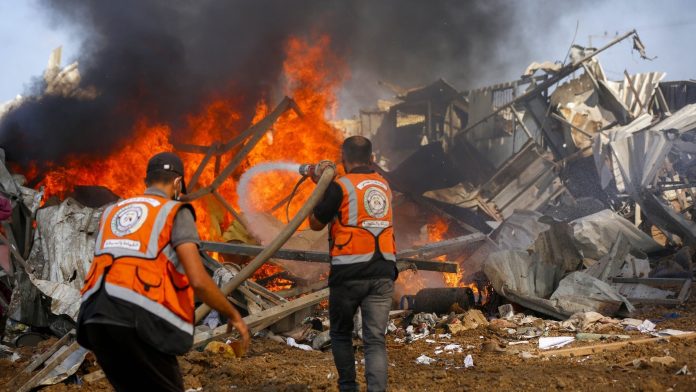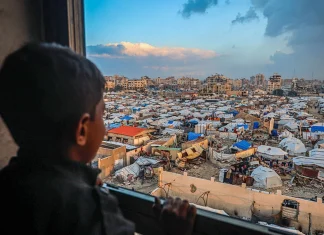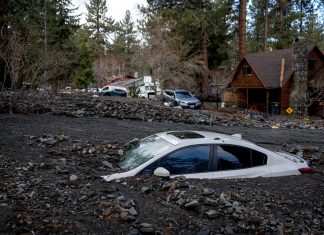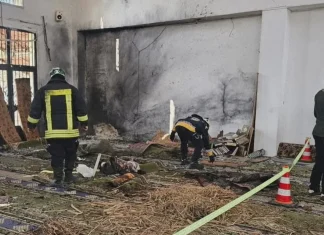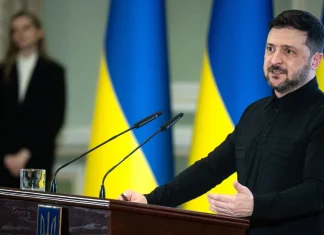Gaza on the Brink: A City, a Conflict, and the Heartbeat of Humanity
In the shadowed alleyways of Gaza City, a tempest of fear and fury churns. The Israeli Defence Minister, Israel Katz, has issued a stark ultimatum that reverberates far beyond the rubble-strewn streets of this embattled enclave: disarm Hamas, release all hostages, or face the obliteration of Gaza City as a punitive measure. His words, heavy with menace—“the gates of hell will open upon the heads” of Hamas militants—cast a grim pall over the already fractured landscape.
Katz’s chilling pledge to transform Gaza City into scenes reminiscent of Rafah and Beit Hanoun—two Gaza towns devastated by previous Israeli campaigns—evokes both historical scars and an uncertain future. But what does this mean for the people who call this city home? And what does it tell us about the volatile calculus of war, where human lives are balanced against political demands?
A Tactical Choice or a Humanitarian Catastrophe?
Prime Minister Benjamin Netanyahu’s recent statement unveils a sliver of potential diplomacy: Israel is ready to resume hostage negotiations, but with unyielding conditions. In response to a ceasefire proposal accepted by Hamas, brokered by mediators Egypt and Qatar, Israel’s claim to “terms acceptable” underscores the complexity of peacemaking amid conflict—a negotiating table shadowed by loss, distrust, and strategic imperatives.
For many, these calculated political maneuvers are inseparable from the staggering human cost. The Integrated Food Security Phase Classification system has just declared that over half a million Gazans—roughly a quarter of the population—are now gripped by famine. This number is expected to swell to over 640,000 by the month’s end. When statistics translate into daily suffering, with children crying from hunger, and families facing the unthinkable choice between survival and dignity, what greater urgency could there be?
The Surge Towards Gaza City: A Battle Changing Lives
For nearly two weeks, Israeli tanks have inched ever closer to Gaza City, a move sanctioned by Netanyahu’s security cabinet despite warnings from Israel’s closest allies. The anticipation of a major military offensive has triggered a mass exodus, with thousands abandoning their homes under threat of violence. In the cacophony of artillery and sirens, the streets speak of lost normalcy, displaced dreams, and fractured communities.
Yet even amid devastation, the flame of resistance flickers in unexpected ways. Just yesterday, Gaza City witnessed a rare public protest. Hundreds marched with banners screaming, “Save Gaza, enough” and “Gaza is dying by the killing, hunger and oppression.” Tawfik Abu Jarad, a respected Palestinian journalist, voiced the collective exhaustion: “Words are finished, and the time has come for action to stop the military operations, to stop the genocide against our people and to stop the massacres taking place daily.” His plea cuts through the din, a raw human call against escalating violence.
A World Divided: Echoes of Outcry and Unease
The brewing storm is not confined to Gaza. Across Israel, dissent bubbles beneath the surface. In Haifa, Israelis took to the streets to protest the ongoing war, revealing a nation grappling with its conscience. Meanwhile, the government’s call-up of 60,000 reservists signals a deepening commitment to military escalation—a decision poised to extend the nightmare for months and further widen the chasm of division within Israeli society.
Compounding the tension is the volatile dynamic within Israel’s political landscape. Netanyahu faces mounting pressure from far-right factions demanding continued aggression and territorial annexation. These urging voices confront the pragmatic, sometimes cautious calls for ceasefire and diplomacy—a stark reminder of how internal politics shape the fate of millions.
The Harsh Toll of Violence
The violence that exploded on October 7, 2023, when Hamas launched a devastating attack on Israeli soil, resulted in the deaths of at least 1,219 Israelis, the majority civilians, according to AFP’s tally. The ripple effects of this assault unleashed one of the deadliest chapters in Gaza’s modern history: the Israeli counteroffensive has claimed more than 62,000 Palestinian lives, mostly civilians, figures affirmed by the UN and the Gaza health ministry.
This staggering imbalance propels a central and painful question: how do nations reconcile security with humanity? How can a just peace emerge when the ghosts of bloodshed loom so large?
Gaza’s Story: Beyond the Headlines
To truly grasp this conflict’s enormity, one must step beyond daily headlines to envision the human mosaic it disrupts. Gaza is not simply a battleground. It is a city steeped in history, culture, and resilience. Its markets once thrived with the sizzling aroma of spices and fresh oranges, its children laughing in sun-dusted streets, families sharing meals beneath a Mediterranean sky.
Today, those streets bear the scars of war: shuttered shops, shattered windows, and tents filled with displaced families. Electricity is a rare luxury; clean water even rarer. The informal economy, the lifeblood for many, lies in ruins.
Fatima, a mother of three, recounts in a hushed tone, “We hear the bombs and the tanks every night. My children ask why their toys don’t work anymore. I tell them to be brave, but sometimes I fear there will be nothing left to come back to.”
Framing the Future: What Can the Global Community Do?
As the hum of drones and artillery continues to drone overhead, the world is forced to reflect on the failures of diplomacy, the price of protracted conflict, and the urgent need for a new roadmap to peace. Can the fragile threads of negotiation, mediated by Egypt and Qatar, hold strong against the tides of violence?
In this crisis, humanitarian aid teeters on the brink of collapse. NGOs and UN agencies call on Israel to ease restrictions and allow essential supplies—food, medicine, fuel—to reach Gaza’s parched, hungry population. Without such efforts, famine and disease threaten to become secondary adversaries to war.
Questions for Us All
As you read these words, imagine the children of Gaza—staring at grey skies, longing for a ceasefire that seems elusive. Consider the families torn by fear, the neighbors caught in crossfire, the activists and diplomats struggling to turn rhetoric into reality.
Can we, as a global community, find compassion amid the chaos? What does peace look like when framed by decades of mistrust, trauma, and competition for land and identity? How can we balance the rights and security of all involved, without sacrificing humanity?
Gaza’s story is not merely a chapter in a distant conflict; it is a living testament to the consequences of division and the enduring hope for reconciliation. It demands our attention—not just as spectators of history but as participants in the urgent quest for justice and peace.
May the voices rising from Gaza, and across Israel, resonate beyond borders and prompt us all to look deeper, feel more deeply, and act with greater courage.


